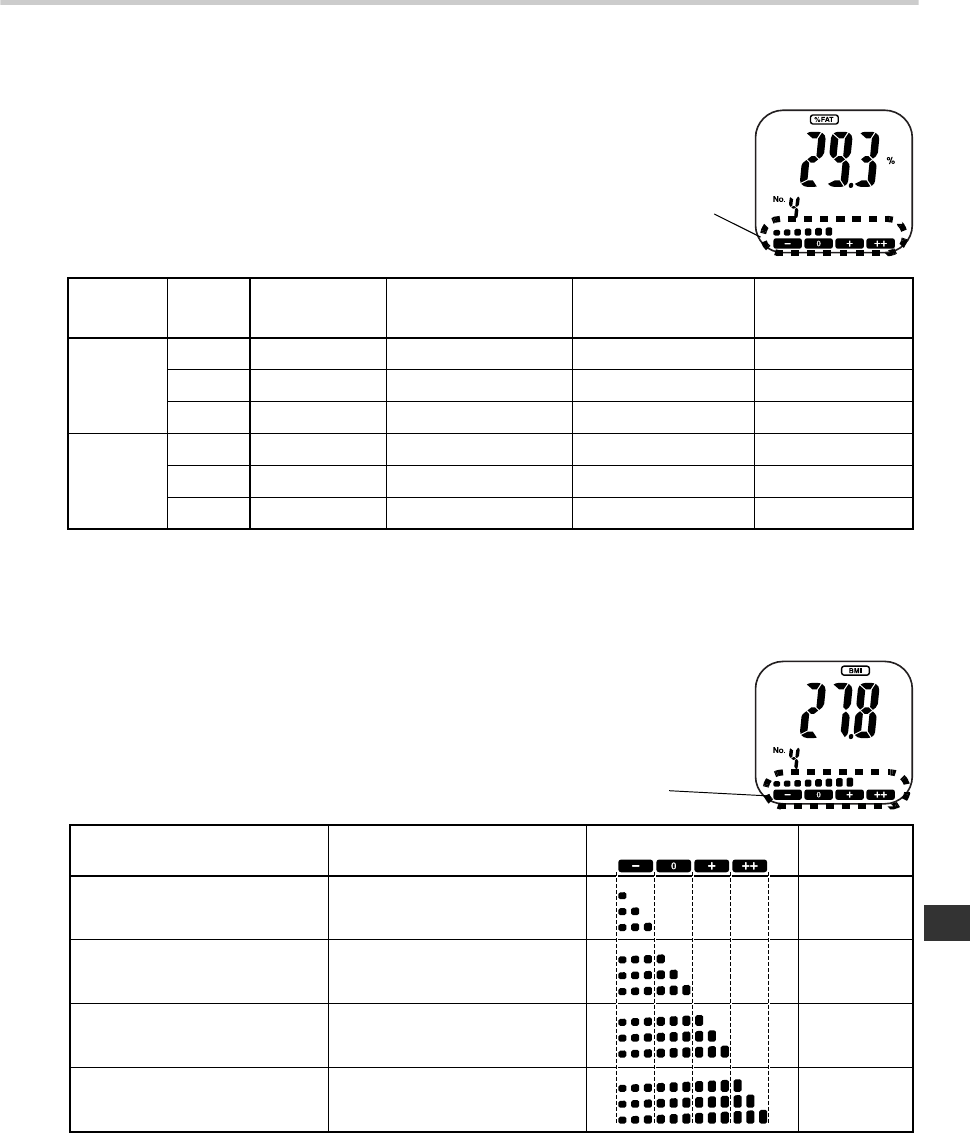
19
5.Using the Unit
EN
5.3 How to Interpret the Measured Results
Body fat percentage
Displays the body fat mass as the percentage of body weight.
Based on NIH/WHO guidelines for BMI
Based on Gallagher et al., American Journal of Clinical Nutrition, Vol. 72, Sept. 2000
BMI
BMI is an internationally used index to show the body condition by
checking the balance between the height and the weight.
It is calculated by the following formula:
BMI in metric = weight (kg) / height (m) / height (m)
The above-mentioned indices refer to the values for obesity judgment proposed by the WHO, the World Health Organization.
Gender Age
– (Low)
(BMI < 18.5)
0 (Normal)
(BMI 18.5 - 24.9)
+ (High)
(BMI 25.0 - 29.9)
++ (Very High)
(BMI 30.0)
Female
20-39
< 21.0 21.0 - 32.9 33.0 - 38.9
39.0
40-59
< 23.0 23.0 - 33.9 34.0 - 39.9
40.0
60-79
< 24.0 24.0 - 35.9 36.0 - 41.9
42.0
Male
20-39
< 8.0 8.0 - 19.9 20.0 - 24.9
25.0
40-59
< 11.0 11.0 - 21.9 22.0 - 27.9
28.0
60-79
< 13.0 13.0 - 24.9 25.0 - 29.9
30.0
>
_
_
>
_
_
>
_
_
>
_
_
>
_
_
>
_
_
>
_
_
7.0 - 10.7
10.8 - 14.5
14.6 - 18.4
18.5 - 20.5
20.6 - 22.7
22.8 - 24.9
25.0 - 26.5
26.6 - 28.2
28.3 - 29.9
30.0 - 34.9
35.0 - 39.9
40.0 - 90.0
Less than 18.5
18.5 or more and less than 25
25 or more and less than 30
30 or more
- (Underweight)
0 (Normal)
+ (Pre-obese)
++ (Obese)
BMI
BMI (Designation by the WHO)
BMI Classification Bar
BMI Rating
Body fat percentage classification
Displays
“–”, “0”, “+”, “++”
BMI classification
Displays
“–”, “0”, “+”, “++”
HBF-400.book Page 19 Wednesday, October 15, 2008 12:05 PM


















